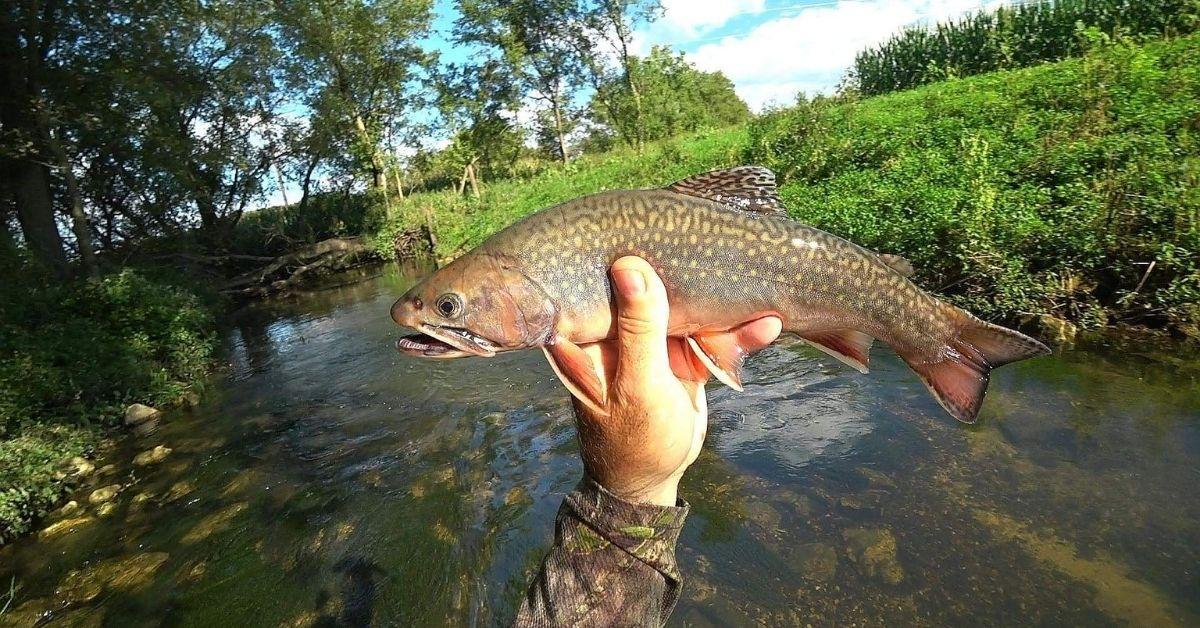Trout Fishing In Wisconsin: How To Catch Fish In The Driftless Region
By: Ron Schmidt
The Wisconsin Driftless area teems with cold, excellent water quality, outstanding water quantity, and trout! Beauty, peace, and challenges await the trout angler that chooses to seek out small streams.
Beauty is something to behold. Its length, width, or depth could describe a small stream. Is a six-foot-wide stream small? Is a stream less than a quarter-mile in length small? Is a stream six inches deep a small stream? In general, these qualities may fit your idea of a small stream, but more accurately, every stream has natural features that are small and big.
I have watched groundwater pop from stream beds in headwaters at a crisp 41F. In the early season, these springs are some of the first signs of life. Watercress will show itself and sprout in these areas. Springs in January are the warmest water available in the trout stream. I have watched groundwater drip and even pour from limestone rock outcroppings. This leaching of minerals and dirt brings precious hard water resources to the stream enabling insects and trout alike to thrive. I have watched gin clear water bubble from swamp areas into a pool and form an overflow that develops a crisp cold micro tributary to the trout stream. I had never observed these natural phenomena outside of trout angling. The beauty of these places is astonishing. The quiet drum of life in these places makes the most excellent peaceful relaxation I have ever felt.
Finding Trout Treasures Deep Into Coulee Country
The author with a brown trout caught from a small Wisconsin stream.
Every driftless stream has small parts. Headwaters of streams may be a dry-run portion before groundwater supply is strong enough to form a stream naturally. Headwaters of streams may be swamp marsh areas. Headwaters of streams may be cold or cool water pools of swamps, large rivers, or lakes that overfill and find an exit from captivity. The journey to the lower ground begins, forming a trout stream. In either form, the headwaters of driftless streams have some of the smallest environments. Water might be only six inches wide and a few inches deep at first. In the next stretch of stream, as water sources build, the stream will deepen and widen. In general, the upper third portions of most driftless streams offer excellent small stream fishing. All driftless streams have tributaries and are often tributary dumps into non-trout warm water systems such as the Mississippi R., Wisconsin R., or others. Tributaries are generally smaller than their downstream destination. It is possible to find small water tributaries attached to trout-designated trout and non-designated streams.
Small Wisconsin Trout Streams Can Create Big Problems
The author holding a brook trout, a fish that is native to many of the state's streams and rivers.
Small stream trout angling can be very challenging. Small casting areas, obstructions, rocks, siltation, and limited access, will test any angler’s resolve and sanity. Small streams do not mean small fish. There are times of the season when some small streams will be thriving and other times that will make you wonder if the water is truly trout water. Some small streams may be cold in spring but too warm in summer. Some may become overgrown or weed-choked as the full sun takes over in mid-summer. The mosquitoes and flies may make you quit. There will be moments when the physical covering is required to fish a small stream. Even the strongest DEET repellent becomes useless. Enough bugs may be present to fill your eyes, ears, mouth, and nose.
Trout Fishing The Wisconsin Driftless Will Keep You On Your Toes
The author showcasing the narrowness of some of Wisconsin's best trout fishing waters.
Be sure you are physically capable of taking on small stream challenges. Water can vary from 6” to 6’ in a single step. Most driftless streams have firm sand and rock bottoms, but the trout angler needs to beware of muck and quicksand too. And then, when the moment comes, be prepared for a knife fight in a phone booth. We have all heard the phrase fishing in a barrel. In small streams, your fishing area of focus may be smaller than a barrel. As your fly or lure gets tagged by a large trout, they will be surprised and energetic. Fish hooked up within six feet have their maximum energy on tap. The streams are filled with hazards the fish know of, and you don’t. You may feel like you are in the front row of a rock concert bumping elbows or moshing with other rocks, trees, and stream banks. You may be leaning over a fallen submerged tree. You may be pinned on a ledge where movement is restricted. It’s on! The Wisconsin Driftless is full of beautiful, peaceful, and challenging moments on a small stream if you're up to it. Happy fishing!
Check out my channel - Wisconsin Trout Fishing, on YouTube to get the next best thing to being there, a small stream trout fishing experience! Thanks. Ron S.
Updated September 13th, 2021 at 7:36 AM CT


